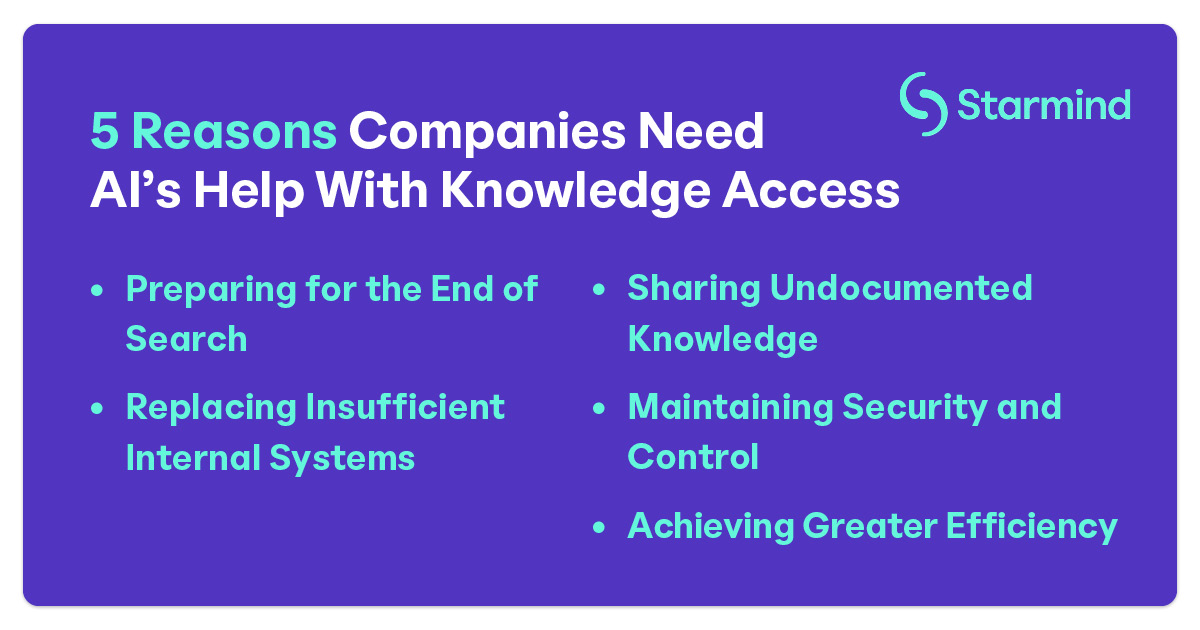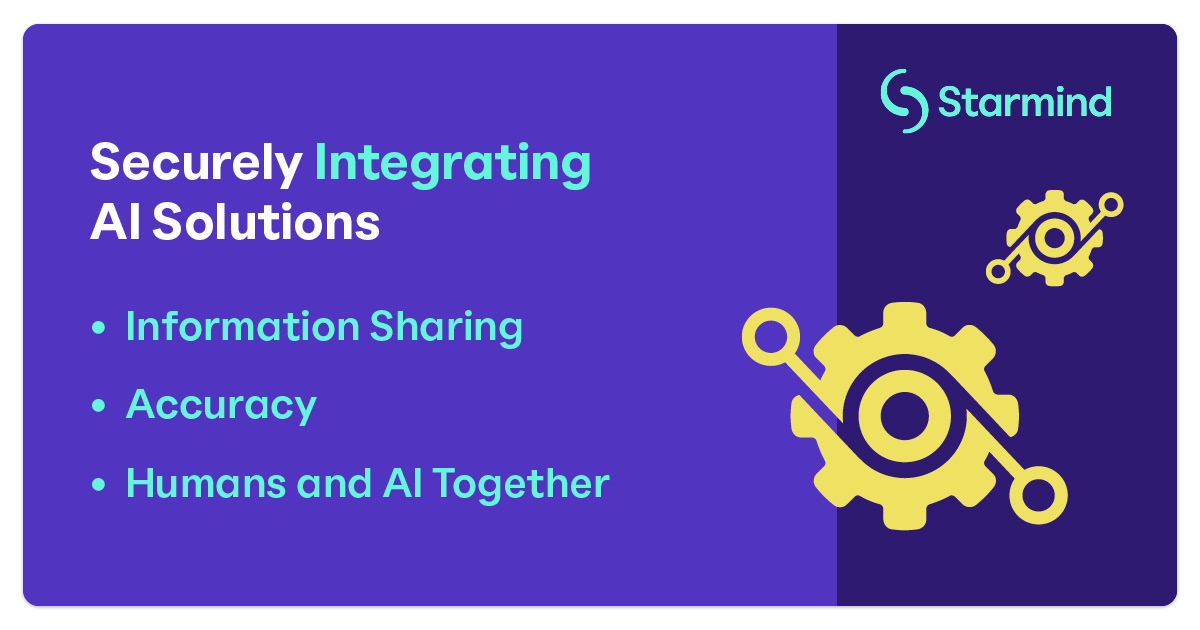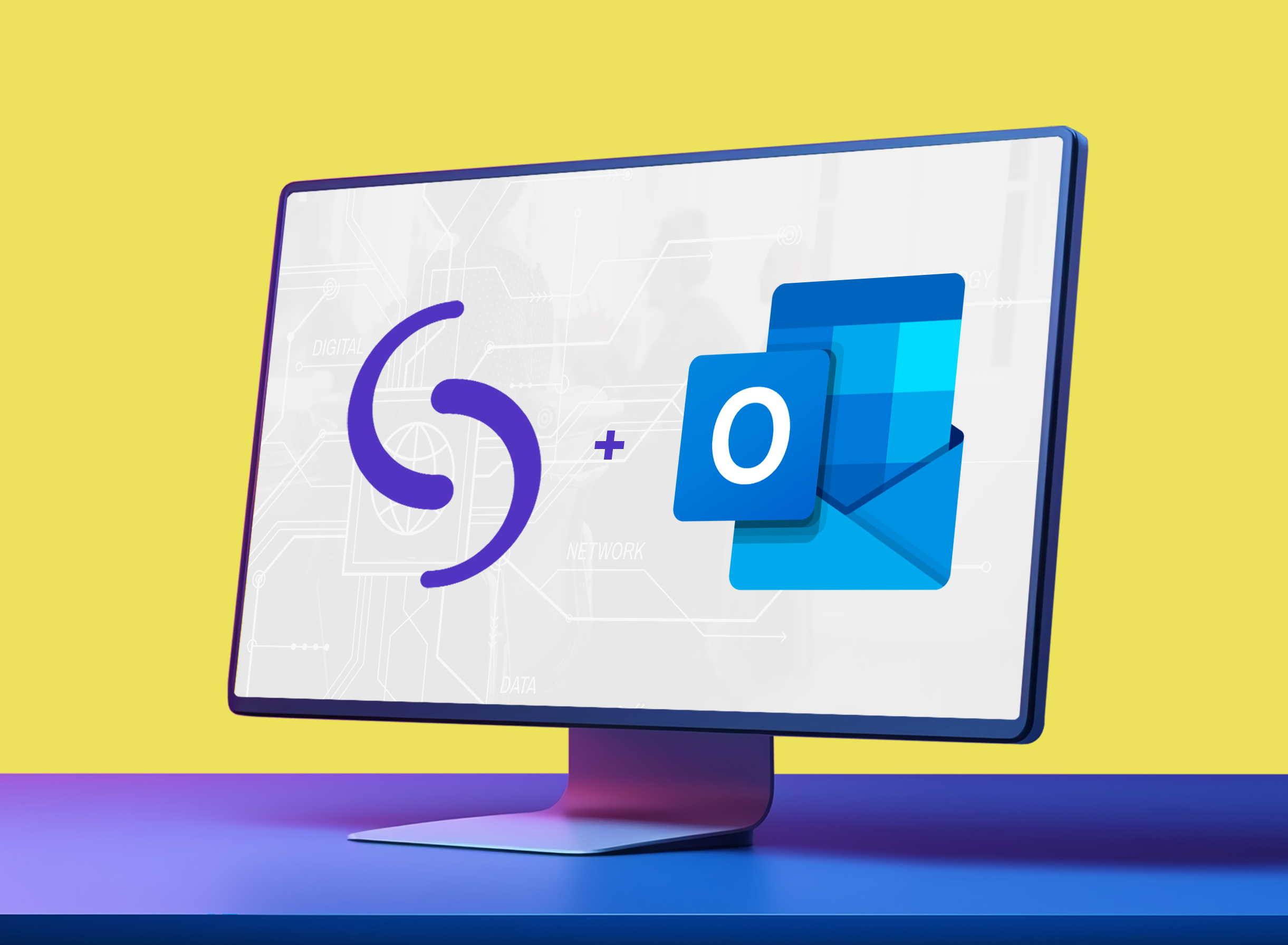Contents
We’re witnessing the end of search as we know it. OpenAI’s ChatGPT quickly made headlines after its launch in 2022, with rapid user adoption and such feats as outperforming 90% of lawyers on the bar exam. It’s clear that artificial intelligence (AI) will spur Innovation and impact every industry in one way or another, so businesses need to figure out how to capitalize on this opportunity.
The rapid growth of AI-enabled tools is welcome, because companies have a strong need for improved efficiency and access to knowledge. Enterprise organizations are hemorrhaging millions of dollars every year, as employees lose nearly two hours each day searching for information to do their work.
With all of the benefits of AI, we can’t forget about the challenges. How much can businesses rely on AI to generate accurate, up-to-date information? How secure are these tools, and is your data safe? Business leaders must balance the potential for AI while keeping the business secure and compliant. Here are some of the key things you need to know as you evaluate AI for your business.
Are you prepared for the future of AI in your workplace? Join Marc Vontobel and Ronan Kirby for a fireside chat to learn how AI is transforming the way we work and how your organization can embrace secure and enterprise-ready AI to supercharge your team.
Large Language Models vs. Knowledge Bases
ChatGPT and Google’s Bard are examples of large language models (LLMs). These models are designed to generate human-like responses by analyzing vast amounts of data. They aren’t sentient — they can’t truly understand the information they’re sharing. LLMs rely on a language-based process to make predictions about the most logical word or sentence to write next.
Focus on using these types of tools for efficiency gains, including repetitive text-based activities like email creation, marketing copy and frequently asked questions for customer support. LLMs do well with a large amount of existing documented knowledge to pull from and train on.
LLMs so far are proving less useful for activities where outside facts need to be verified and sourced. An executive at OpenAI, creator of ChatGPT-4, admits that “it may make up facts” because it’s trying to make logical guesses, not act as a research assistant.
LLMs aren't a replacement for knowledge bases, which are curated collections of documented knowledge within an organization. Knowledge bases are structured to allow for easy access and retrieval of accurate information in a secure environment. An AI-powered knowledge network, such as Starmind, ensures the knowledge is relevant, accurate and up to date by providing access to both documented and knowledge. These networks can also connect employees to subject matter experts who can verify information and provide additional context.
Knowledge bases are particularly useful for businesses that deal with complex or technical information. They provide a more accurate and reliable source of information than LLMs while ensuring consistency of information for all employees. LLMs, by contrast, will likely provide a different response every time the same question is asked.
To use LLMs safely and improve productivity, start by defining clear use cases and selecting the most appropriate tools for your needs. For example, LLMs are usually pre-trained on massive datasets. You might not have the same expanse of data, resources and expertise to fine-tune models for your specific use cases.
Security is another conversation you need to have before adopting LLMs or integrating them with your work processes. Any data fed into an AI system is at the mercy of that system’s security and information-sharing policies. The power of LLMs can also be used for nefarious means, as AI and machine learning tools are already being manipulated by hackers to fine-tune their phishing attacks.
How AI Solves Organizations' Need for Knowledge Access
Company success depends employees’ access to the right information at the right time. Unfortunately, many businesses struggle to provide this to employees in their day-to-day work. This is often due to a lack of resources, expertise or infrastructure. The result is siloed or inaccessible knowledge, leaving employees unsure of what's available or where to look.
Access is only the first step. Your people need to find the right information quickly and verify its accuracy. The ongoing digital transformation of businesses has exponentially increased the data generated inside companies, challenging employees to sift through the noise. But only 0.5% of the knowledge collected by organizations is used or analyzed.
AI’s value includes its ability to augment and automate human decision-making processes, which leads to greater efficiency, accuracy and innovation. AI isn’t just about analysis and automation, but also about locating valuable resources, including people, to improve and streamline business processes.
It’s clear that organizations need a better way to communicate, share knowledge and foster collaborative innovation, and AI can help address these challenges. But what’s driving this change? Here are five factors.
Preparing for the End of Search
As we move past the era of search, keyword-based searches and pages of results will be replaced with intuitive explanations and tailored summaries that focus on a single, relevant answer. Even existing search engines are being transformed, as we’ve seen with Microsoft’s ChatGPT-powered version of Bing.
Replacing Insufficient Internal Systems
Decades after the launch of Google, businesses still struggle with developing a strong internal search system for employees. Complicated business processes and fast-paced environments exacerbate this challenge. Employees and companies alike want a better way.
Sharing Undocumented Knowledge
Even the most powerful AI tools can only provide results based on the information they can access. However, most information within organizations is undocumented, or tacit knowledge. This knowledge is gained through experience and lives in the minds of employees rather than written down.
Maintaining Security and Control
For all of ChatGPT’s promise and hype, it’s a public database that takes in the data that’s fed to it. In other words, it’s a nightmare scenario for companies looking to protect trade secrets and other proprietary information. Companies need to know that whatever system their employees use is safe and meets the safety, security and compliance requirements applied to any other software.
Achieving Greater Efficiency
Businesses are always trying to improve productivity and efficiency, especially with an aging workforce and a tight labor market. Anything that improves operational effectiveness is in high demand. Knowledge access is especially important for accurately connecting people with valuable, timely information and avoiding delays.

Securely Integrating AI Solutions
While AI might feel inevitable, you have control over how these solutions are integrated into your company's infrastructure and security practices. Here are three areas to consider when setting AI-related security and compliance policies in your organization
Information Sharing
It can be tempting to feed as much information as possible to an AI platform, including emails and internal documentation. But sharing sensitive information like this creates serious issues, especially on public-facing platforms. Instead, be strategic about what information you share with AI tools — and ensure you’re evaluating these plans against your data privacy and security policies.
Whatever information you rely on, make sure it’s accurate and up-to-date so the models are properly positioned. Build a human component into the process so you can review the information provided by AI for accuracy and bridge knowledge gaps.
Accuracy
Misinformation is an important concern that predates AI, and these models can blur the lines between what’s real and fake (but plausible). If AI can instantly provide answers, there should also be a process to instantly connect with a source that can verify the information.
Humans and AI Together
The future of AI will be hybrid. Don’t expect AI solutions to replace employees. As advanced as AI has become, it still can’t outperform people at some of the most important aspects of work. Instead, look for ways to augment people’s knowledge and effort.
LLMs, for example, look at the documented past. It’s like driving a car using only the rearview mirror. You can see what’s behind you but not what’s in front of you. To answer forward-facing questions, you need a system like Starmind that's also able to connect employees with subject matter experts.

Unlocking Your Potential With AI
AI’s potential will continue to expand, and so will concerns over security and compliance. While businesses need to embrace AI, they also need to balance the pursuit of innovation with accuracy and privacy.
It’s important to work with a trusted expert, such as Starmind, so you can find the use cases that best fit your needs and deliver the strongest results. Starmind has a proven history of success helping the world’s leading companies leverage AI to gain stronger access to knowledge, save time and improve performance.
Learn how Starmind helps Hitachi Energy build a sustainable future by connecting its global teams to knowledge.



